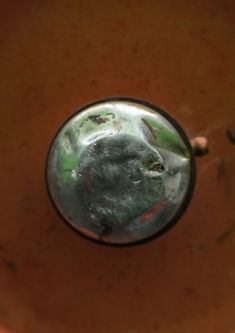PETER BURR
Burr's manipulation of the pixelated and distorted is magnificent. I try to not make a habit of writing these blog posts as direct reviews of each artist's talk or presentation, but when you come across such a wonderfully unique, satirical depiction of modern, digital life, it gets hard no to.
Personally, I'm drawn to the straight lines and geometricity within the work. It is absolutely hypnotising to look at, but yet it feels as if we shouldn't be looking.



In a conversation with Brandon Stosuy, Burr talks about the difficulty of labeling his art as a video game. This is something that I am also struggling with. I think that the aesthetics involved really contributes to this confusion that every digital graphic must now be a game. I suppose it is a bit more descriptive to call it a game, rather than simply calling it an 'experience'. The canvas of my own digital art is often the same one used to make video games, but when I have no interest in making a video game it feels, almost, fraudulent to use.
At the end of the conversation, Burr provides a set of recomendations. Inquisitive as I am, I checked them out.
RECOMMENDATIONS
Having come across Delia Derbyshire's work in my undergrad, I was so happy to see that Burr had provided a reference to Invention for Radio No. 1. This project between Derbyshire and Bermange explores recordings of people describing their dreams. An underlying, overarching, progressively repetitive score follows alongside the dialog, providing a space for the narrative to exist in.

I found that RESET, by Granular Synthesis provided a similar space for a narrative to exist within. The work is informed by technological progression and perceptibility of scale. On their website, https://granularsynthesis.info/RESET-1, there is mention of their 'invasive approach'. I think that I like this invasive approach. In any other context, this would be talked about as being noxious - poisoning the space with noise.
To me, it reminds me of being surrounded by white noise, masking unpleasant/unwanted frequencies by using every frequency possible. This is how I understand granulation, splitting something into tiny particles and scattering them over a surface or within a space.
PIXELS, OBVIOUSLY.
Pixels, Obviously.
Above is a small piece that was made directly after Burr's lecture/seminar. It is one pixel, enlarged and converted into a sphere and slowly rotated. I can't remember why, except from the aesthetic of pixelation.
Researching Burr and his reccomendations has opened up a visual representation of granulation for me and I am wondering how I can direct this newfound interest of granular aesthetics towards my interests in unnatural landscapes.
FINDING GRANULAR LANDSCAPES

Here I have a series of photographs that show corrosion in metal and rubber. I found that these images describe a type of granulation that happens outside of the digital realm. What was once an organized surface has been displaced and rearranged to create something new. This is not passive creation, but a deliberate deformation of a material by other materials.
I like that I can imagine a history within this designed system.
Cloud-like textures on a blue sky.



A black and white variant

Splitting light. Organising particles into sections- each section is its own larger particle.




The experiments above were an attempt to create a granular experience by submitting different styles of transparent objects to the standby-blue light of a projector



























